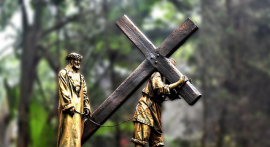
Scientists from NASA are currently observing two black holes that are expected to collide thousands of years from now.
According to them, the violent collision will be powerful enough to send ripples across the universe's space-time fabric, KRWG News22 reported.
The scientists have been observing the two black holes since the start of this year. However, they initially predicted that the two will collide millions of years from now. However, based on their new findings, the scientists noted that the collision might happen 100,000 years from now, which is much early earlier than expected.
Fortunately, we won't be around to experience the full effect of the impact once that happens. And, Earth will probably not get affected by the collision since the black holes are located in the Virgo constellation, which is billions of light years away, according to CNET.
As explained by the scientists, most galaxies, including our Milky Way, have black holes at the center. These grow bigger over time and consume everything in their paths including stars, galaxies and other black holes.
Once two black holes collide, it could result in a massive explosion that will send gravitational waves across the universe. These are similar to the shock waves produced by the explosion from a dynamite or grenade.
According to the scientists, the force from the explosion and the gravitational waves will shake up the universe's space-time fabric and even demonstrate Albert Einstein's general theory of relativity, which states that massive objects in the universe can distort the space-time continuum.
As simplified by Space.com, this effect is similar to what happens when a person sits in the middle of a trampoline. Since the weight of the body will press down on the midsection of the trampoline and will create a dimple, a marble placed on its edge will roll down towards the center.
In the same way, scientists predict that a similar effect will occur once the two black holes collide.
"The detection of gravitational waves lets us probe the secrets of gravity and test Einstein's theory in the most extreme environment in our universe - black holes," Daniel D'Ozario, the co-author of the study said.
Like D'Ozario, Zoltan Haiman, an astronomer from the Columbia University and lead author of the study, also noted that the event will be able to provide future scientists a deeper understanding of the universe and gravitational waves.
"This is the closest we've come to observing two black holes on their way to a massive collision," he said according to KRWG News22. "Watching this process reach its culmination can tell us whether black holes and galaxies grow at the same rate and ultimately test a fundamental property of space-time: its ability to carry vibrations called gravitational waves, produced in the last, most violent, stage of the merger."
The findings of the researchers were detailed in a report published on September 16 in the scientific journal Nature.














